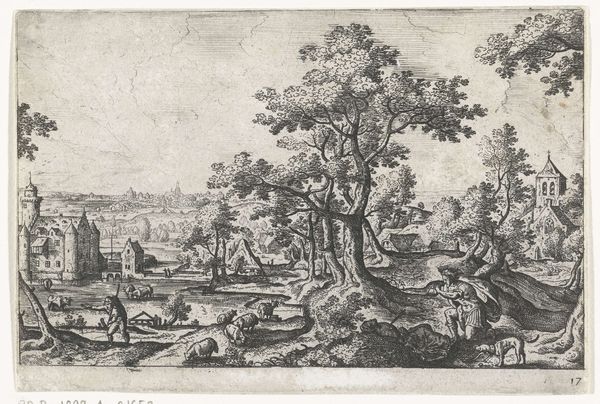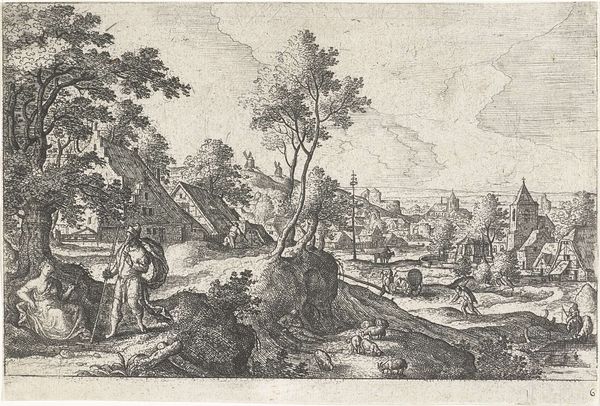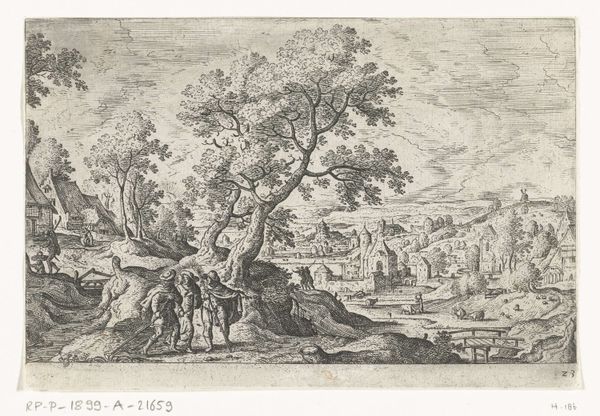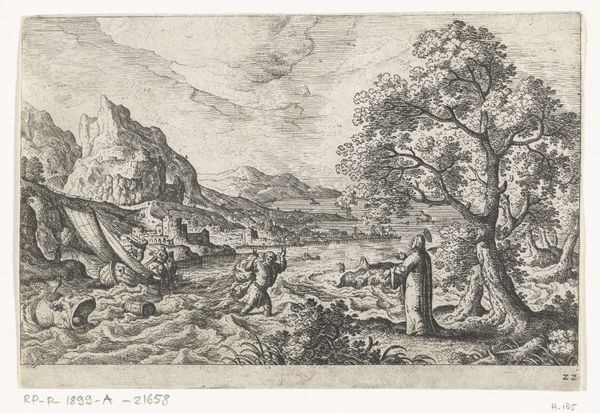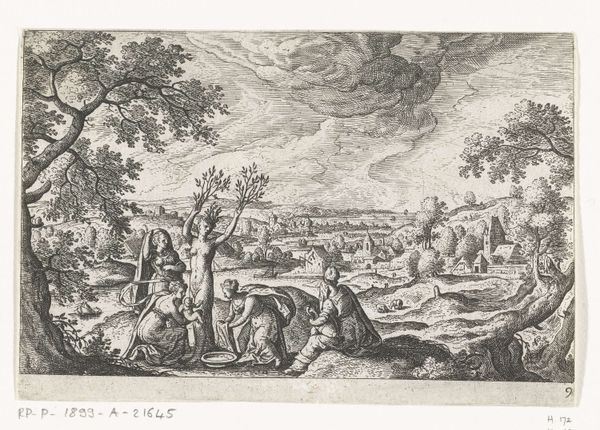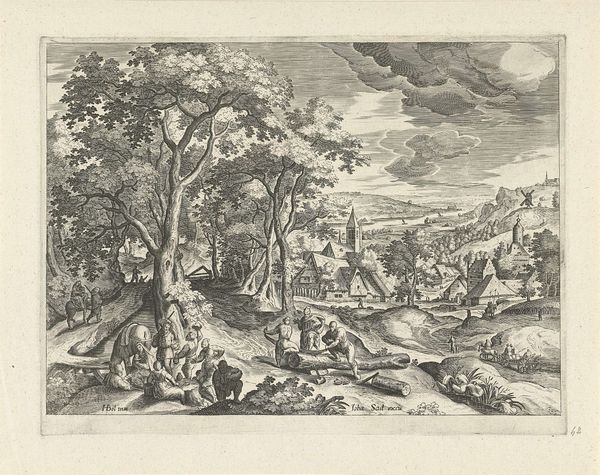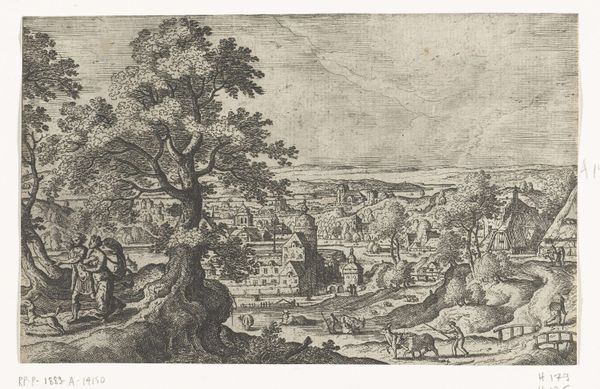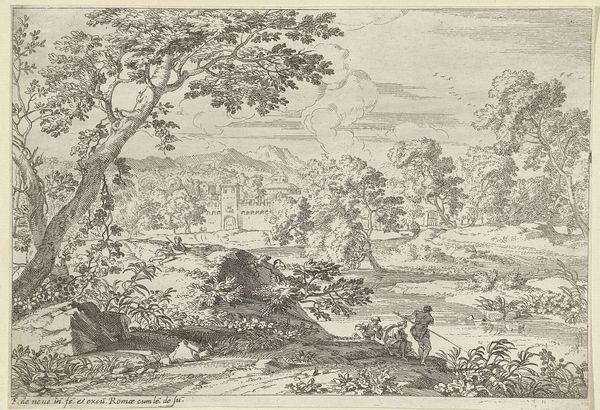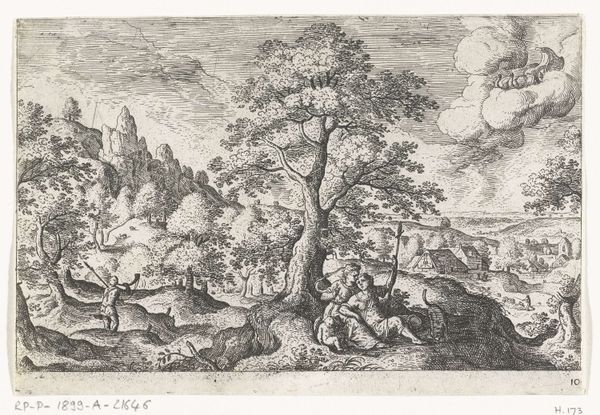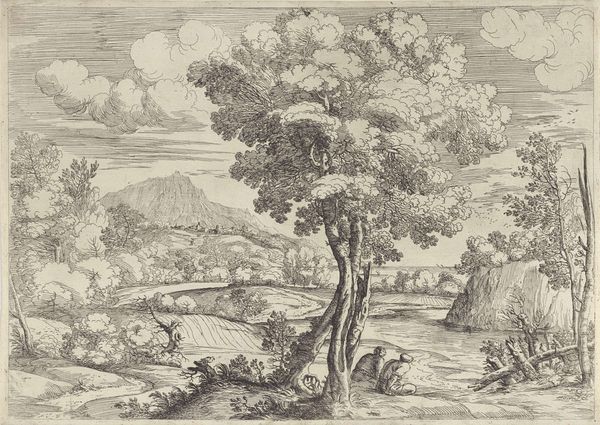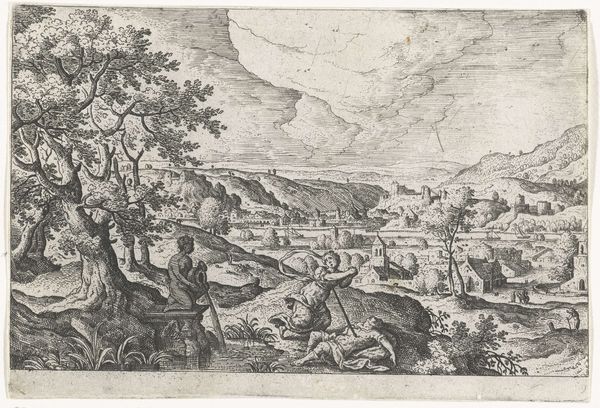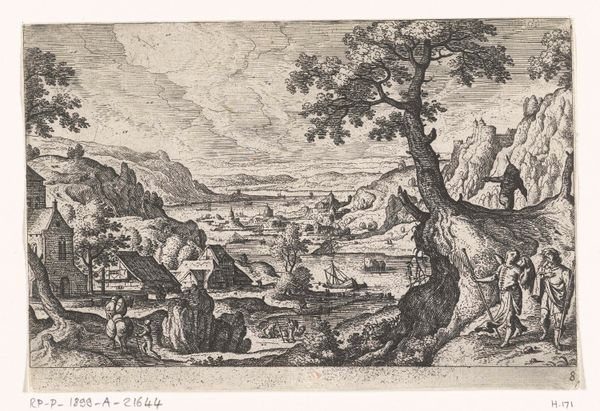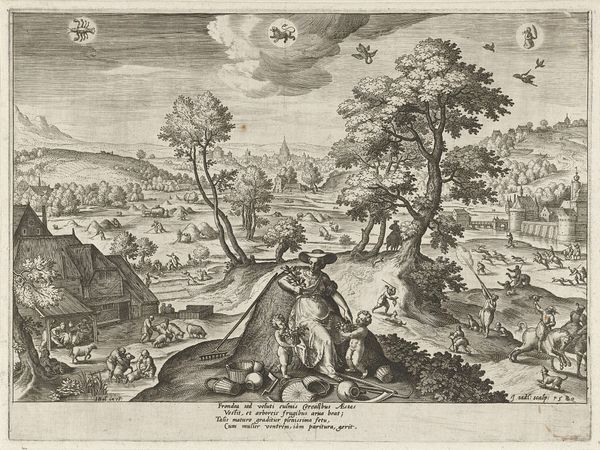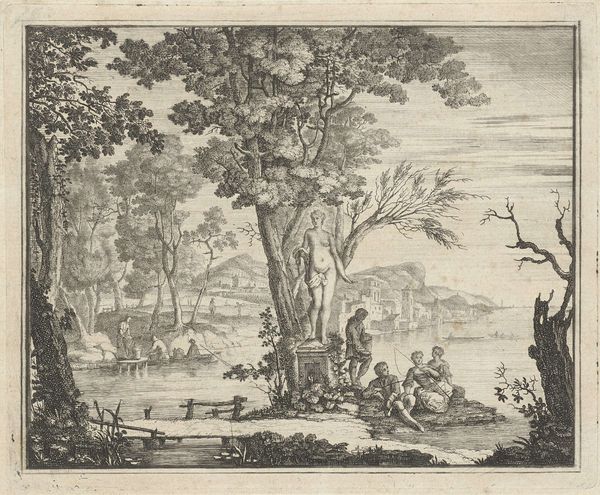
print, etching, engraving
#
allegory
#
baroque
# print
#
etching
#
landscape
#
history-painting
#
engraving
Dimensions: height 124 mm, width 185 mm
Copyright: Rijks Museum: Open Domain
Curator: Here we have "Liefdesscène met Jupiter," or "Love Scene with Jupiter," an anonymous print dating roughly from 1550 to 1650, held at the Rijksmuseum. What catches your eye? Editor: Immediately, the overall silvery tonality created by the intricate engraving work; it's quite delicate. A restful, if slightly melancholic, pastoral scene seems to unfold. Curator: The landscape is interesting, almost Flemish in its details, with a distant town rendered in miniature. Above, Jupiter rides in his chariot among the clouds. His presence introduces themes of mythology, of course. This image clearly resonates with certain symbolic traditions. Editor: I’m struck by the formal arrangement. The dominant tree acts almost as a central pillar, bisecting the landscape and creating distinct foreground and background planes. Look at how the light falls--unevenly--creating textural variety. Curator: Note how Jupiter’s positioning also balances the weight of the tree on the right; there is an intentionality here. The reclining lovers under the tree probably represent one of Jupiter's many amorous encounters; given his chariot, perhaps he's arriving to meet with her? It evokes both earthly pleasure and divine intervention. Such prints, popular at the time, offer visual cues about power dynamics, desire, and social hierarchies, often intertwined with classical narratives. Editor: Agreed. And the circular form down front on the grass, a platter maybe, seems poised to visually echo and offset Jupiter’s celestial trajectory; note the directional force, too. Jupiter rushes in as love happens lazily down here on the ground. It’s a study in compositional contrasts. Curator: This piece exemplifies the allegorical narratives popular in art. We’re drawn into this image not just by its visual elements but by the underlying cultural code that celebrates knowledge, sensuality, and idealized landscapes. It reminds us that these are complex windows onto a worldview different from our own. Editor: It’s certainly impressive how such intricate lines in monochrome achieve a sense of depth and subtle light variations to draw out deeper ideas and concepts. Seeing art as structural, almost mathematical, adds to my understanding of the artwork and its purpose. Curator: Indeed, whether we read it through symbols or dissect its composition, this work serves as a powerful statement about cultural memory. Editor: It is incredible to consider how a seemingly simple print allows so many visual interpretations.
Comments
No comments
Be the first to comment and join the conversation on the ultimate creative platform.
